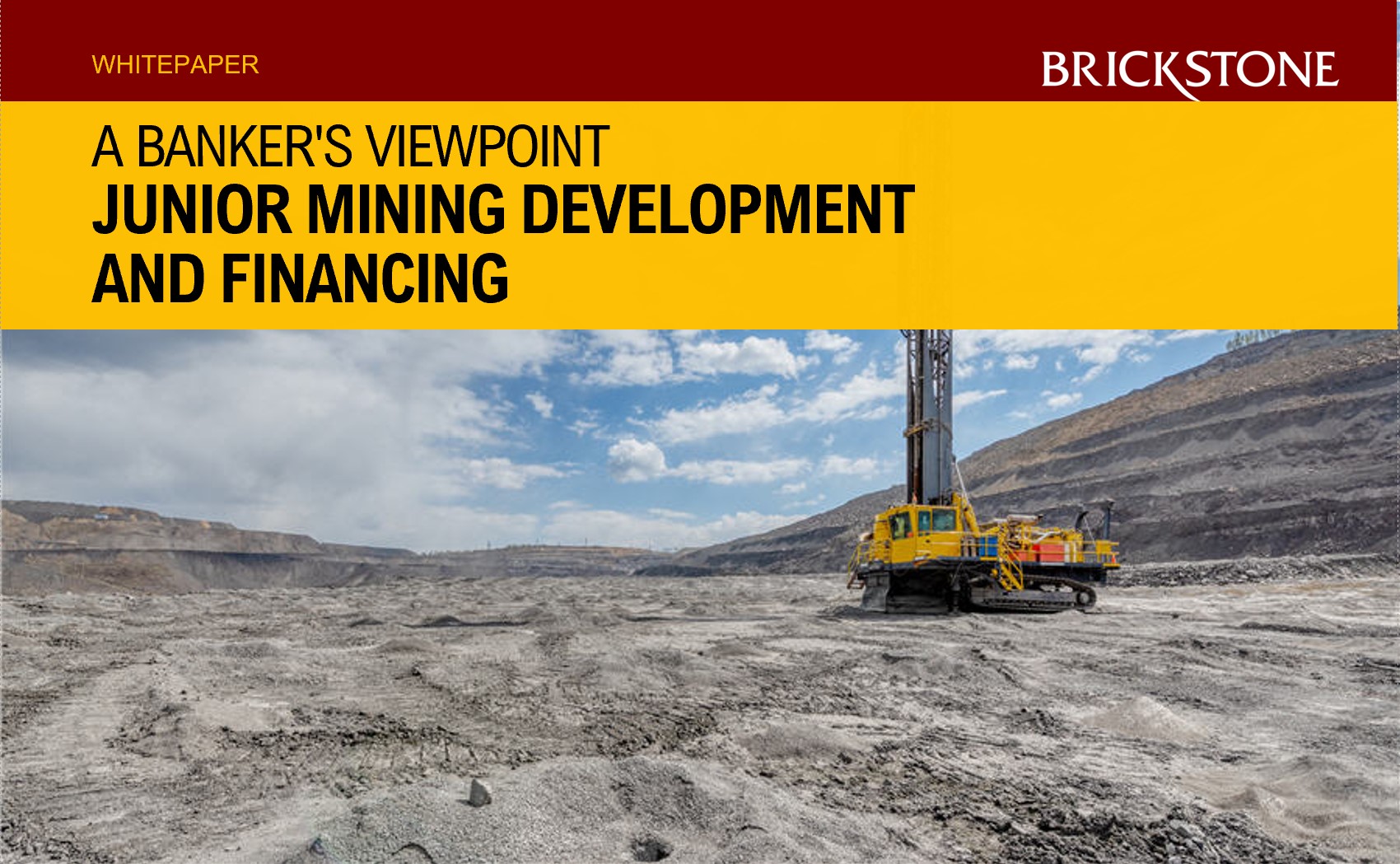Junior Mining Development and Financing
Junior Mining Development and Financing have become prominent issues that must be addressed in light of the fast-growing economic development in newly industrialized markets which has created a strong demand for certain commodities, having a triple effect on their prices. This is known as the commodity “super-cycle”.
This White Paper has been curated by the expert team at Brickstone Africa for project development teams, financiers, and other stakeholders in junior mining development, to give an extensive exposition into the banker’s perspective and desires when funding junior mining operations in Nigeria.
In furtherance to the above, this White Paper first explores the typical types of funding for various Junior Mining Project Development phases, and the sources of those financing. For instance, it mentions that projects in their prospecting and initial exploration phase are funded by Equity, and the source of such funding is from Shareholders. Conversely, projects in their post-commissioning (completion) phase are usually funded by Equity Debt (non-recourse), and the source of this financing is from shareholders as well as selected banks. These types of funding, and various others are further expatiated in this White Paper.
Additionally, this White Paper demystifies the concept of Bankable Feasibility Study (BFS), and why Banks are usually keen on having it for junior mining development projects. The Bankable Feasibility Study is a substantial document representing the data and facts gathered during exhaustive investigations into the viability of a project like a Junior Mining Development Project. Such a document is considered bankable when the content is sufficiently detailed and supported by underlying data so as to enable a potential lender to make a judgement on whether or not it would consider providing finance based on the risk-reward relationship.
The Bankability Feasibility Study could alternatively be known as the process of due diligence of a project by the bank. The major risks that are usually investigated include the Orebody risk, Technology Risk, Operational Risk, Market Risk, Infrastructure Risk, Political Risk, Construction Risk, and Environmental Risk.
With reference to the Orebody Risk, the lender will assess the geological model of the orebody, the metallurgical properties, and the physical structure. It must be noted that the orebody is the single most important characteristic of any resource project, and quite frankly, an area where insufficient investigation is carried out by potential lenders. It is the only real asset in a mining project, and the only one that will generate revenue.
Technology Risk Assessment is usually taken on beneficiation, mining risk, and equipment selection. The Beneficiation Risk is the highest risk element in junior mining projects, after those factors related to mineral reserves.
Operational Risks may be internal or external to the junior mining project and is at a peak when the project is at an early stage. It deals with issues such as general operational difficulties or poor management. Market Risk is the potential risk of a junior mining project failing to sell its commodities into the market at the actual prices that are forecasted in the budget.
Infrastructure Risk for its own part is of particular importance to junior mining projects that are remotely located or situated in countries with poorly developed infrastructure in general. Research is made with regards to the availability of water and power supplies, and the maintenance status of the road or rail links, harbour facilities, and communication networks.
Political or Sovereign Risk is also particular to certain geographic areas, and research will be made into Nationalization, Expropriation, Profit Repatriation, Foreign Exchange Status, Security of Tenure, Changes in Legislation, and Changes in Economic Environment of the location of the junior mining project.
The major concern for banks in relation to the construction process of the Junior Mining Project is the potential cost of overruns. This is because, less than 20% of these junior mining projects are ever completed within budget and on time, as a result of problems such as underestimation of costs, delays in construction, and other start-up problems. As such, lenders usually require a completion guarantee from project sponsors that will effectively guarantee the obligations of the project until it has reached completion.
Moving forward, it must be noted that the environmental risk comprises more than the surface damage caused by mining operations, such as water pollution and destruction of vegetation. It also covers issues such as land ownership, health, tailings disposal, water recycling and other social and cultural implications. All these risks, their implications, and how they must be investigated are thoroughly discussed in this White Paper.
Furthermore, this White Paper gives an extensive exposition into another major part of the Bank Feasibility Study process, which is the Financial Evaluation of the said junior mining project. The assessment of the financing structure will eventually result in the determination of the optimum debt: equity ratio. This ratio is usually a clear indication as to the robustness of the project.
This White Paper focuses on Project Finance Loans as the baseline of this work and explains that they are often resorted to because the projects are usually in the long term, as they take from 7 – 10 years. Further, the terms and conditions are generally applicable to one or more of three different phases – The Construction Phase, The Completion Phase, and The Post-Completion Phase.
In the Construction Phase, all conditions precedent to the funding have been satisfied to the point at which the junior mining project is financially complete, and commissioning can commence. Here, there is a full recourse to the project sponsor, and should the loan facility have been fully drawn and the project have not reached financial completion, the shareholders will be required to fund any other costs required to reach the construction phase.
The Completion Phase is the period when the junior mining project goes through commissioning. It begins with the financial completion and ends with the project having passed the completion test. Here, sponsors’ completion guarantees, or contractors’ bonds are called on. If the funding arrangements have not been properly structured, the lenders could find themselves having to put in more debt. For this purpose, some banks offer more punitively expensive standby facilities.
The Post-Completion Phase covers the period from when the completion test has been achieved and conversion to non-recourse has taken place, to the point when the loan is fully repaid. This is the longest phase, and typically takes from 5—7 years, but may also be as long as 20 years.
Lastly, this White Paper also exhaustively expatiates the distinct sources of financing that are particular to the mining industry. These sources can be broadly categorized into Equity Financing and Debt Financing. The Alternative Financing sources include Production-Based Financing, Private-Equity Finance, and emerging sources such as Financing through Cryptocurrencies and Crowdfunding.
Conclusively, this White Paper sheds light on Project Financing, its requirements, and it illustrates the Project Finance Structure for the Junior Mining Development Projects.








